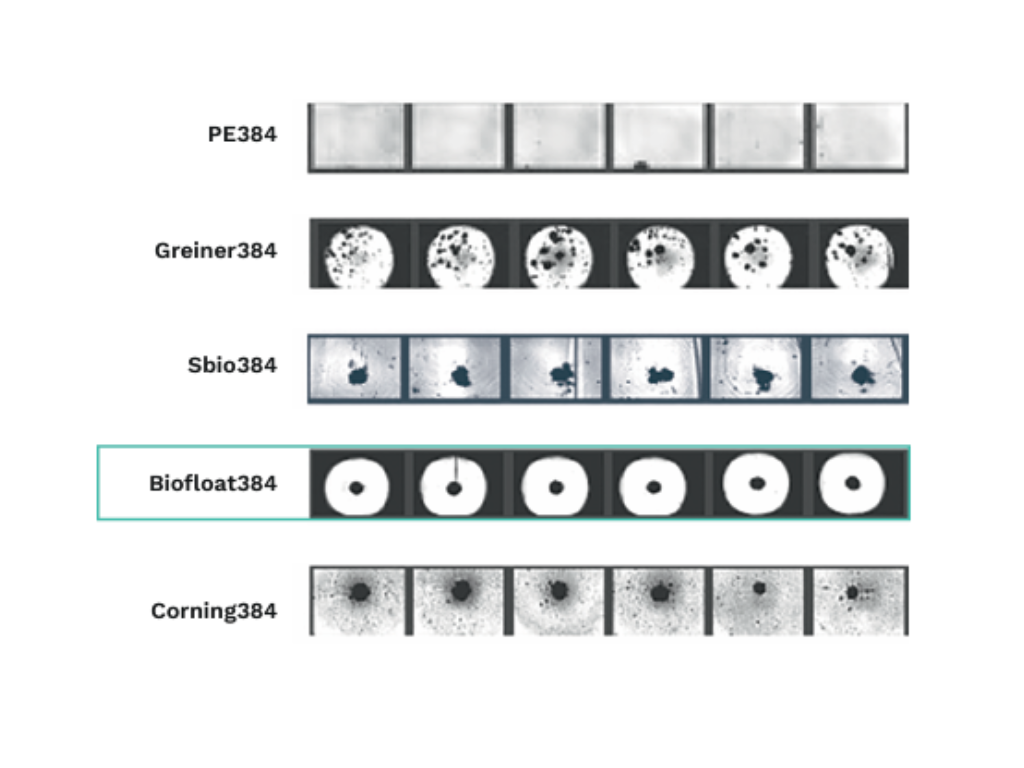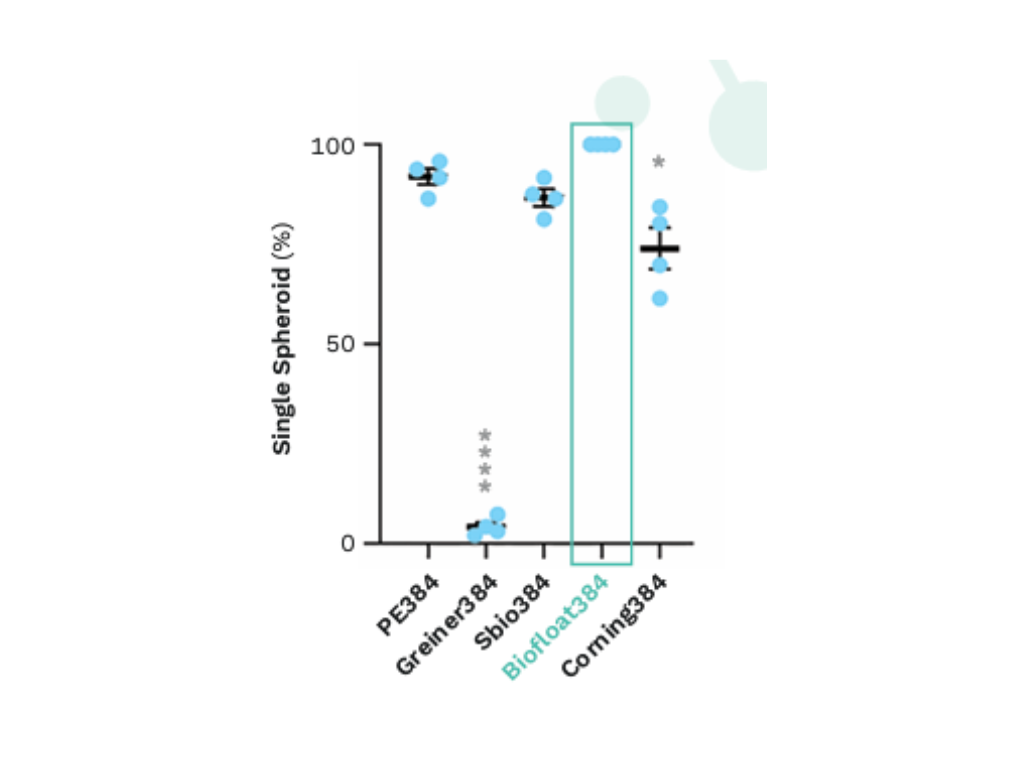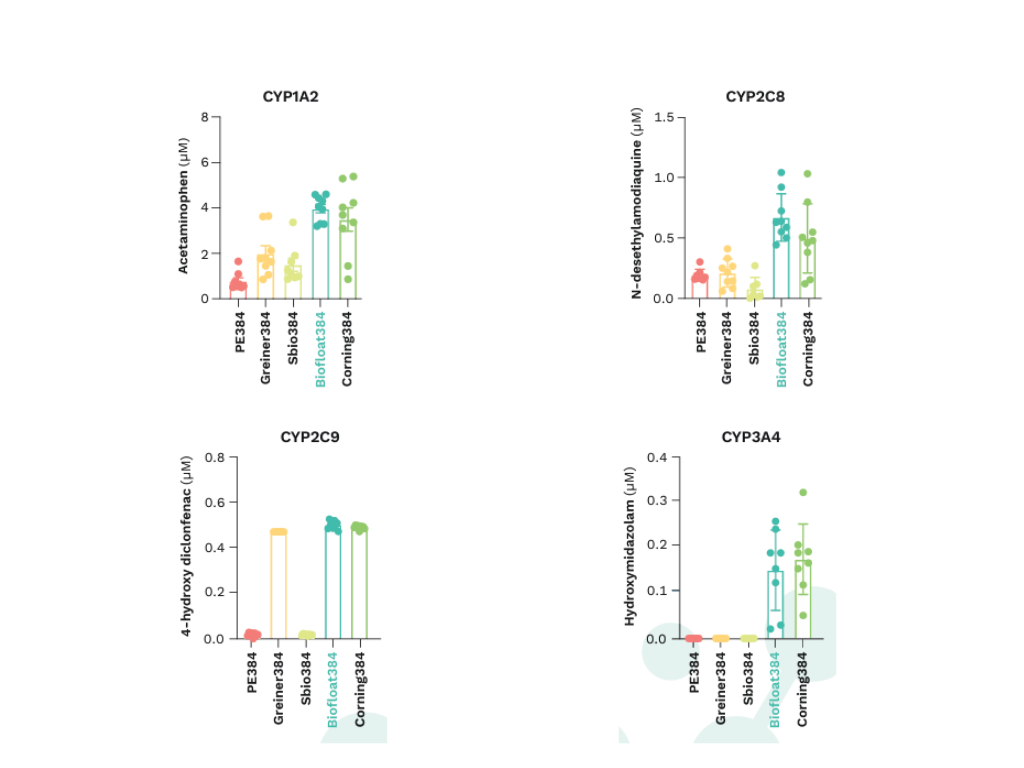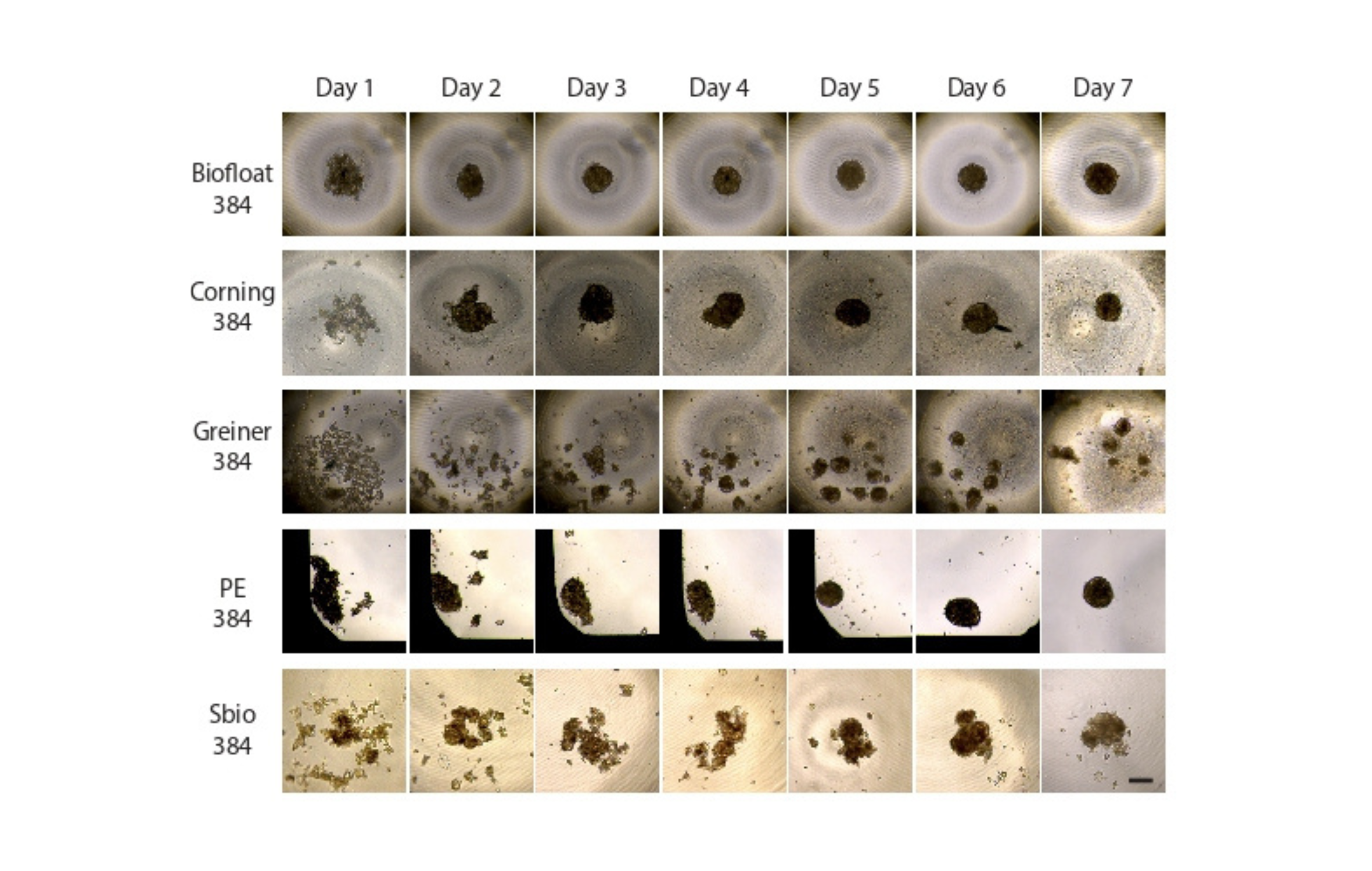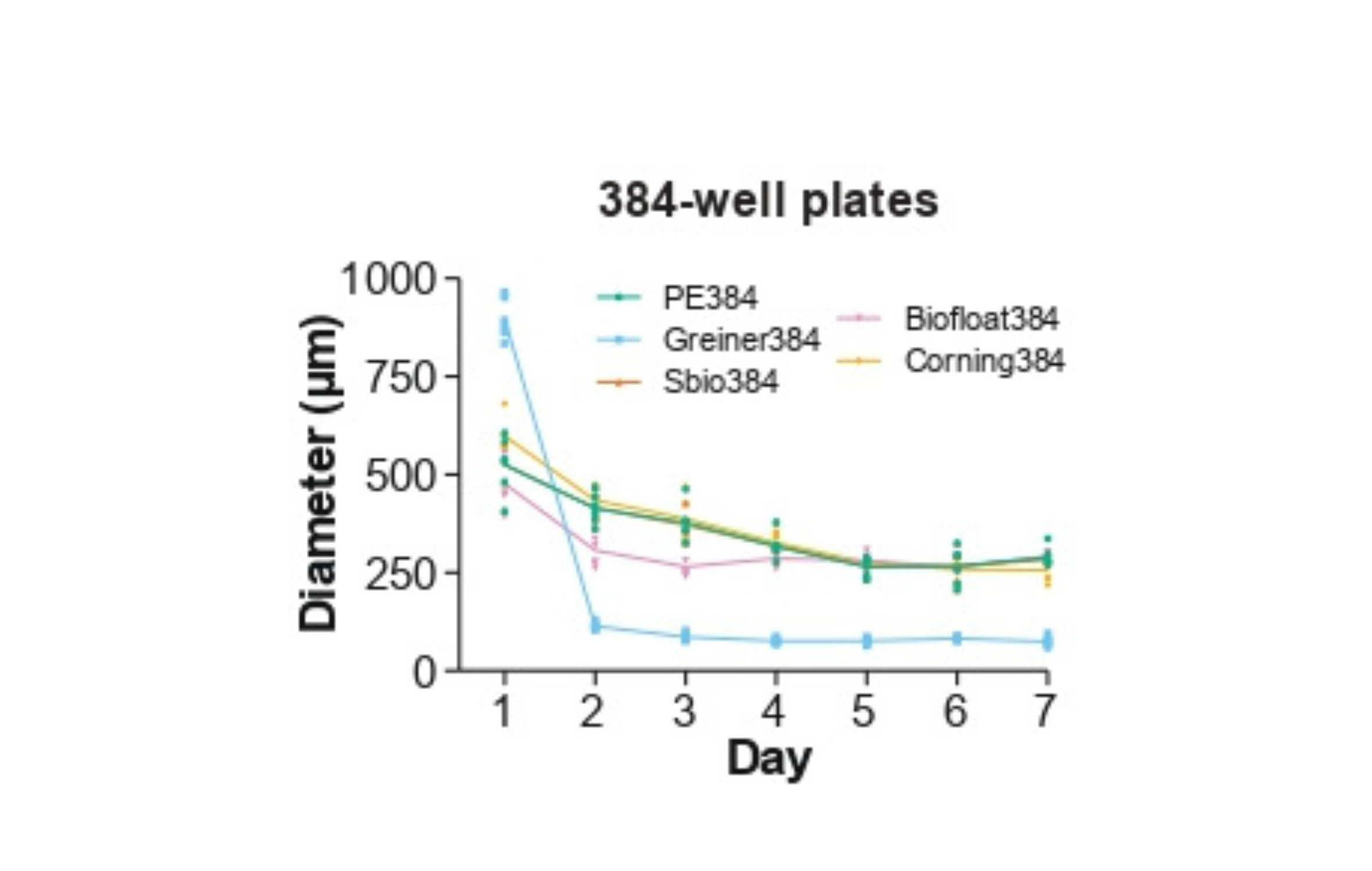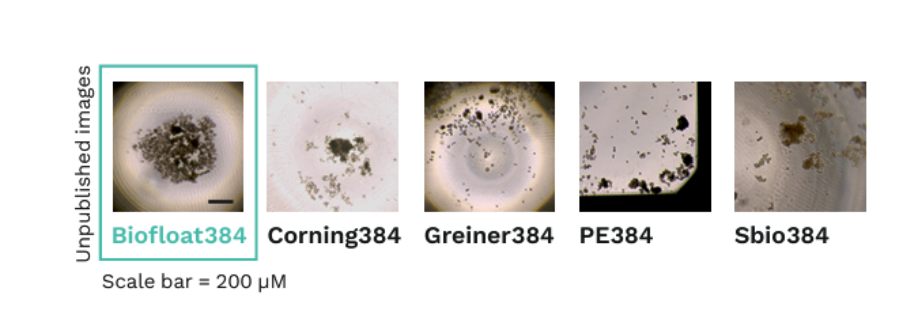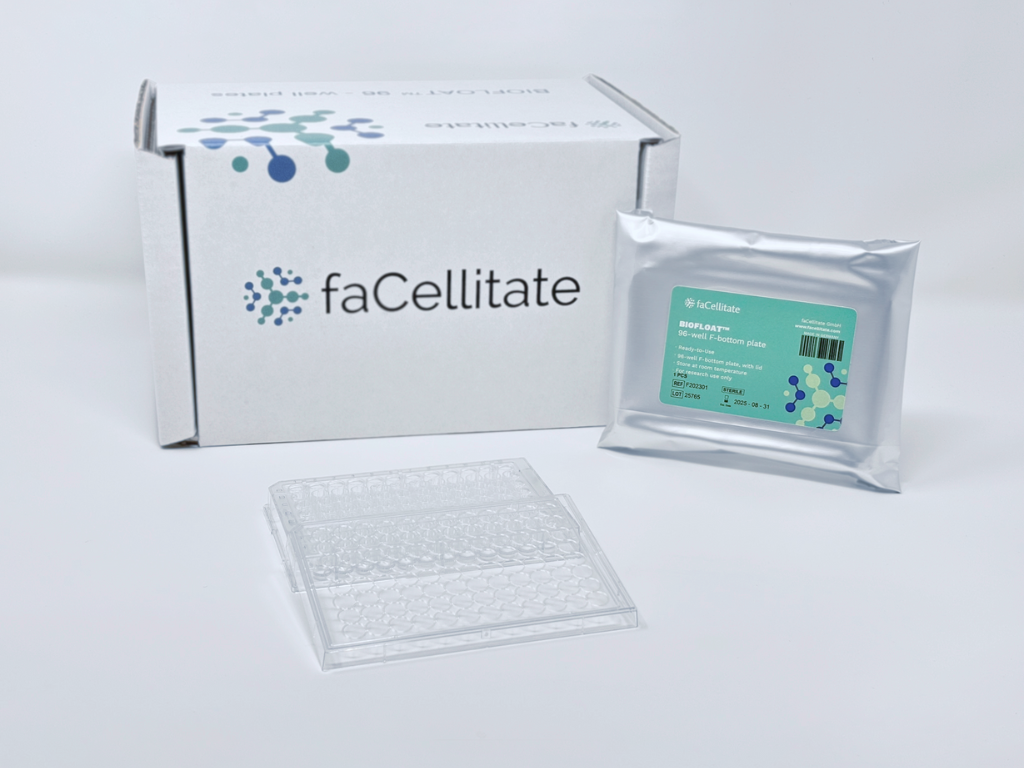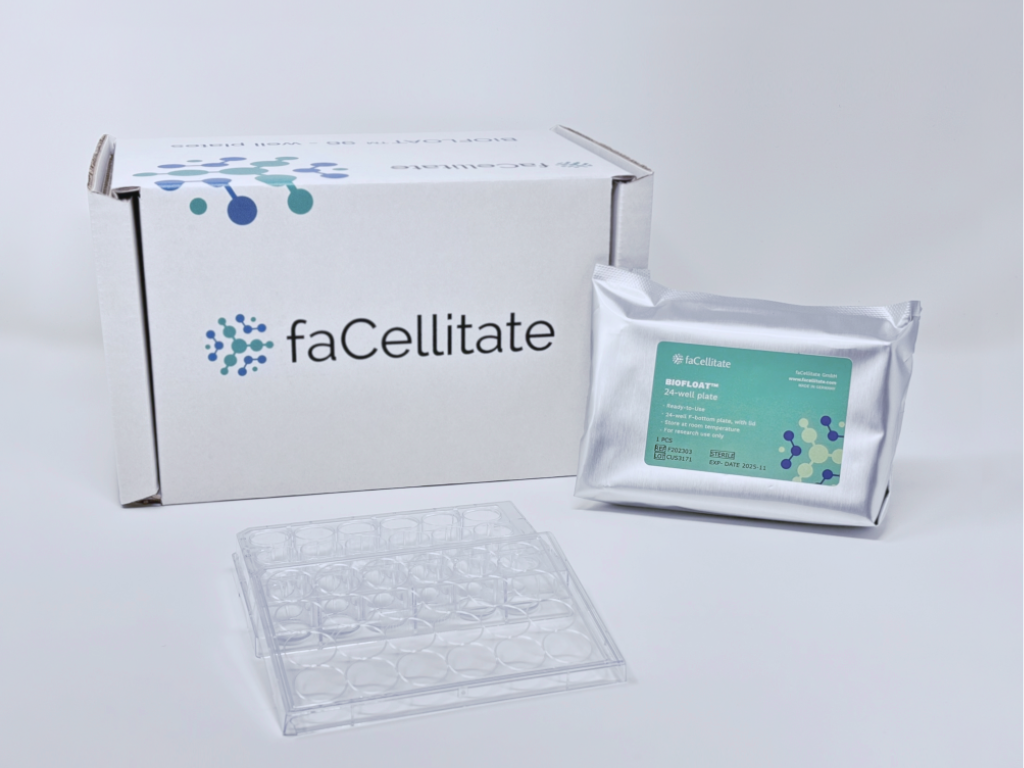The BIOFLOAT™ 96-well plate & BIOFLOAT™ 384-well plate have nanometer-thin uniform coating that supports spheroid formation even with cells that do not aggregate easily.
- BIOFLOAT™ plates enable rapid formation of spheroids from human primary hepatocytes.
- Spheroids exhibit unique characteristics: uniformity, vitality, and reproducibility.
- Key cellular properties are excellently reproducible with BIOFLOAT™ plates.
BIOFLOAT™ 384-well plates are recommended as top performers for spheroid
formation in the Biotechnology Journal
“The choice of ultra low attachment plates impacts primary human and primary canine hepatocyte spheroid formation, phenotypes and function” conducted at the Karolinska Insitutet by the group of Prof. Dr. Volker M. Lauschke
Highly reproducible spheroid formation in BIOFLOAT™ plates
The authors observed 100% single spheroid formation of primary human hepatocytes only in BIOFLOAT™ plates among the tested 384-well plates.
-> BIOFLOAT™ plates are particularly well suited for high-throughput pharmacological and toxicological experiments.
BIOFLOAT™ plates allow for the rapid and reproducible formation of spheroids from human primary hepatocytes. Formed spheroids have unique properties in terms of uniformity, viability and excellent reproducibility of key cellular properties.
Want to make sure BIOFLOAT™ 96-well is suitable for your cell culture?
We are confident in the quality of our products and you can also be convinced of this.
We invite you to try our 96-well plates to get perfect spheroids and organoids for your application.
Metabolic active spheroids in
BIOFLOAT™ plates
In the benchmark study, primary human hepatocytes formed spheroids with high metabolic enzyme activity in BIOFLOAT™ plates.
BIOFLOAT™ plates showed the lower variability between different measurements of the same metabolite compared to competitor plates -> High data consistency and reproducibility.
Rapid spheroid formation in BIOFLOAT™ plates
The figures show considerably faster primary human hepatocyte spheroid formation in BIOFLOAT™ plates (3 days) compared to competitor plates (5 to 6 days).
BIOFLOAT™ plates are best suited for high-throughput pharmacological and toxicological experiments.
Stable primary canine hepatocyte spheroids in BIOFLOAT™ plates.
BIOFLOAT™ plates were among the few tested models that supported the formation of primary canine hepatocyte spheroids.
Authors observed that, one stable aggregate per well formed in BIOFLOAT™ plates whereas many small aggregates were observed in the wells of competitor plates.
Long-term cultivation of viable spheroids in BIOFLOAT™ plates
According to the results of the benchmark study, BIOFLOAT™ plates enable long-term cultivation of highly viable primary human hepatocyte spheroids. ATP levels dropped significantly already at day 14 in almost all other plates.
The variability between different measurements of analytical parameters like metabolic enzyme activitiy is lower in spheroids formed in BIOFLOAT™ plates compared to spheroids formed in other ultra-low attachment plates.
![]() Cardiac myocytes
Cardiac myocytes
![]() Endothelial cells
Endothelial cells
![]() Primary hepatocytes
Primary hepatocytes
![]() Alveolar epithelial cells
Alveolar epithelial cells
![]() Neuronal stem cells
Neuronal stem cells
Request Your Free Sample Now
Downloads & Links
Trusted by and published in Prominent journals










Our Partners












